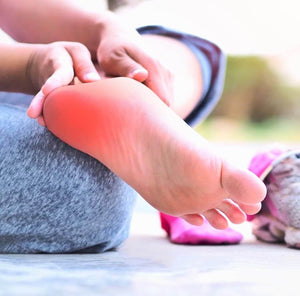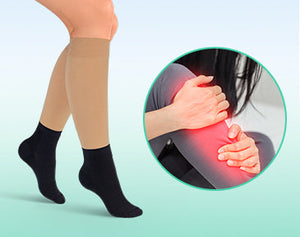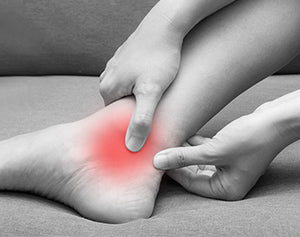The Orthofeet Blog
- All Posts
- Achilles Tendon Pain
- All
- Arch Support
- Arthritis
- Back Pain
- Bunions
- Diabetes
- Flat Feet
- Foot Pain
- Golf Shoes
- Hammer Toes
- Heel Pain
- Heel Pain/ Heel Spurs
- Knee & Hip Pain
- Knee pain
- Morton Neuroma
- Neuropathy
- Orthopedic shoes
- Other
- Overpronation
- Plantar Fasciitis
- Swollen Feet
Plantar Fasciitis


Josh White DPM / August 12, 2021
Hiking with Plantar Fasciitis: What You Need to Know
Hiking with Plantar Fasciitis: What You Need to Know
Read Post-
Foot Care for Elderly: How to Care for Aging Feet
Medical information provided by Orthofeet Team / July 29, 2025Developing a consistent daily routine for foot care at home is one of the most important steps you can take to maintain healthy feet. These simple habits can prevent many problems and help you identify issues early. Daily Care Tips Wash your feet thoroughly every day with warm (not hot) water and mild soap [4]. Pay special attention to cleaning between your toes, where moisture and bacteria can accumulate. After washing, dry your feet completely, especially between the toes, as moisture in these areas can lead to fungal infections. Apply moisturizer to keep skin soft and prevent cracking, but avoid putting lotion between your toes where excess moisture can cause problems [4]. Use a quality foot cream or lotion specifically designed for dry skin, and pay particular attention to your heels where cracking is most common. Inspect your feet daily for any changes, including cuts, bruises, swelling, redness, or changes in skin color [4]. Use a mirror if necessary to see the bottoms of your feet, or ask a family member to help if you have difficulty seeing all areas clearly. Look for any signs of infection, such as increased warmth, persistent redness, or discharge from cuts or sores. Early detection of problems allows for prompt treatment and prevents complications. Healthy Habits Elevate your feet regularly to reduce swelling and improve circulation. When sitting, prop your feet up on a footstool or ottoman so they're level with or slightly above your heart. Even 15-20 minutes of elevation several times throughout the day can help reduce fluid buildup. Perform gentle stretching and exercises to improve circulation and maintain flexibility [4]. Simple ankle rotations, calf raises, and toe wiggling can help keep blood flowing and joints moving, offering seniors a good way to promote foot health. These exercises are particularly important if you spend long periods sitting or lying down. Wear clean, moisture-wicking socks that keep your feet dry and comfortable [4]. Change socks daily, or more often if your feet tend to sweat. Choose socks made from materials that pull moisture away from your skin, and avoid socks with tight elastic bands that can restrict circulation. Keep your toenails trimmed straight across to prevent ingrown nails [4]. If you have difficulty reaching your feet or have vision problems, consider having a podiatrist or other healthcare provider trim your nails safely. When to Call a Doctor Consulting a specialized doctor can offer the best solutions for persistent issues. Certain signs and symptoms require prompt medical attention [4]. Any sign of infection, including persistent redness, warmth, swelling, or discharge from a wound, should be evaluated by a healthcare provider immediately. Persistent or worsening pain that interferes with walking or daily activities needs professional evaluation. Don't assume that foot pain is a normal part of aging that you must tolerate. Numbness, tingling, or burning sensations that don't improve may indicate nerve problems that require medical treatment. These symptoms are particularly concerning for people with diabetes or other conditions that affect circulation. Sudden or severe swelling, especially if it affects only one foot or is accompanied by pain, could indicate a serious condition requiring immediate care. Any wound that doesn't heal within a few days or shows signs of getting worse should be examined by a healthcare provider, especially if you have diabetes or circulation problems. Choosing the Right Footwear for Aging Feet Proper orthopedic shoes become increasingly important as your feet change with age. The right shoes can prevent many problems and provide the support and comfort your aging feet need. Must-Have Features Wide toe boxes give your toes adequate space and prevent pressure on bunions, hammertoes, or swollen areas. Shoes that squeeze your toes together can worsen existing deformities and create new problems over time. Adjustable closures such as Velcro straps, elastic laces, or multiple strap systems allow you to modify the fit as your feet change throughout the day [4]. This adjustability is particularly important if you experience swelling or have arthritis that makes traditional laces difficult to manage. Slip-resistant soles provide stability and reduce fall risk. Look for shoes with textured rubber soles that provide good traction on various surfaces, both wet and dry. Lightweight cushioning helps absorb impact and reduces stress on your joints. Quality cushioning in the heel and forefoot areas compensates for the natural loss of fat padding that occurs with age. Orthotic support helps maintain proper foot alignment and reduces strain on muscles and joints. Built-in arch support is particularly important if your feet have flattened over time or if you have conditions like plantar fasciitis. The Fit Factor Measure your feet regularly because aging feet often change in size and shape [2]. What fit perfectly a year ago may no longer be appropriate. Have your feet measured at least once a year, or whenever you notice your shoes feeling different. Shop for shoes in the afternoon or evening when your feet are slightly swollen to their largest size of the day. This ensures that shoes will be comfortable even when natural swelling occurs. Ensure shoes are snug but not tight. You should have about a thumb's width of space between your longest toe and the front of the shoe. The shoe should hold your foot securely without creating pressure points or allowing excessive movement. Look for adjustable features that accommodate daily changes in foot size due to swelling or stiffness. Shoes that can be loosened or tightened as needed provide better comfort throughout the day. Orthofeet Footwear Options for Elderly Foot Care At Orthofeet, we understand that how to care for aging feet includes choosing footwear designed specifically for the challenges that come with age. Our orthopedic shoes address the common problems that affect older adults while providing the comfort and support needed for daily activities. Our shoes feature premium orthotic insoles that provide targeted arch support and help maintain proper foot alignment. This support is crucial for people whose feet have changed shape over time or who have conditions like arthritis that affect foot function. Extra depth and wide-width options accommodate foot deformities, swelling, or the need for custom orthotics. Our designs ensure that people with bunions, hammertoes, or other age-related foot changes can find comfortable, supportive footwear. Cushioned, shock-absorbing soles help compensate for the natural loss of fat padding in aging feet. This cushioning reduces impact on joints and makes walking more comfortable on hard surfaces. Breathable, stretchable uppers adjust to your foot's shape and accommodate minor swelling that may occur throughout the day. These materials help prevent pressure points while providing a secure, comfortable fit. Easy-to-use closures make our shoes accessible for people with arthritis or limited mobility. Many of our styles feature Velcro straps, elastic laces, or other adjustable systems that don't require fine motor skills to operate. Our specialized collections include shoes for foot pain, shoes for swollen feet and edema, and orthopedic shoes for women and men’s orthopedic shoes. Taking proper care of your aging feet is an investment in your independence and quality of life. By understanding the changes that occur with age, developing consistent daily care habits, and choosing appropriate footwear, you can keep your feet healthy and comfortable for years to come. Remember that foot care for elderly individuals isn't just about treating problems after they develop. It's about preventing issues before they start and maintaining the mobility that allows you to continue enjoying the activities you love.[product-group-tile]================================Sources: [1] PubMed. "Foot care for the aging." 1987. https://pubmed.ncbi.nlm.nih.gov/3194453/ [2] PMC. "Foot Examination for Older Adults." 2021. https://pmc.ncbi.nlm.nih.gov/articles/PMC9614715/ [3] PubMed. "Foot disorders in the elderly: A mini-review." 2017. https://pubmed.ncbi.nlm.nih.gov/28826743/ [4] Emory Healthcare. "Foot Care for Seniors: 10 Important Tips." https://www.emoryhealthcare.org/stories/wellness/foot-care-for-seniors-10-important-tipsRead More -
What is a Toe Box and How to Protect Your Toes
Medical information provided by Josh White DPM / January 10, 2023Don't ignore your toes when they cry out for help. The world can be cruel to them, especially when they have to face it in ill-fitting shoes. What your toes actually need is the correct environment for them to fit without being squeezed, move about freely and proper protection, which they won’t get if you end up buying the wrong shoes. Whether you have a common foot condition, or if your feet are model material, wearing shoes designed without consideration of the forefoot can cause more harm than not. Here is everything you need to know about how to find shoes that fit you correctly, protect your toes and help alleviate existing foot conditions. Where should your toe be in a shoe? Your longest toe should be about half an inch, which is about the width of your finger, from the front of the shoe. Here's an age-old trick that still works like a charm when you’re looking for a pair of shoes that protect and fit your toes properly: Place your thumb between your big toe and the tip of the shoe. Your thumb should be able to press down all the way to the bottom of the shoe, without any toes getting in the way. If this doesn’t happen, try a larger size. While standing up, spread and wiggle your toes to make sure they have enough room to move comfortably. Now, try standing on your toes to make sure that your big toe’s bend matches the shoe bend. If you feel the joint of your big toe is either before or after the shoe bend, it’s not a good fit. Always try on and buy shoes towards the end of the day after your feet have been through activity. Even if you don't suffer from edema or swelling, your feet, including toes, will be different after many hours on your feet. Make sure to try on shoes with the pair of socks you usually wear or intend to wear with these shoes. There's nothing more annoying than trying shoes with a pair of thin store peds and liners, only to come home and realize they are too tight with your thicker athletic socks. What is the toe box of a shoe? The technical name for the part of the tip of the shoe is toe box. The toe box gives your toes protection from impact and if you choose wide toe box shoes, it will give your toes enough room to move comfortably. It’s worth knowing that the width span of your toes should be wider than the balls of your feet. If you suspect your feet might be wider than average, read about the signs you may have wide feet to understand better. Here are some other toe box realities to keep in mind: Worst case scenario of an ill-fitting toe box Cramping or crushing, leading to blisters, corns, calluses, ingrown toenails and even black toenails. And if you already suffer from a foot condition, such as hammertoes or bunions, an ill-fitting toe box can not only be painful, but also worsen your condition. Love your toes, but don't ever let them get hugged too tightly. The best kind of toe box to look for The one that offers extra depth and has a stretchable, breathable upper as well as a soft, padded interior that conforms to your foot’s unique shape, keeps your feet dry to ward off bacteria build up and odors, and prevent irritation. Not all toe boxes are actually boxy The word “box” may be misleading, because toe boxes come in a wide variety of shapes and styles. The right toe box style is individual and depends on your specific foot shape and whether or not you have any foot conditions, but it should always be long and wide enough to accommodate your toes comfortably. Toe boxes to avoid Unless they are wide enough, avoid toe boxes with pointed toes, often found in dress styles, pumps and ballet flats..If your feet are not shaped in a pointed manner, how can they possibly fit a pointed toe shoe? This pointed style will prevent your toes from lying flat and can cause many conditions described above, including metatarsalgia—commonly known as a stone bruise—which causes pain and inflammation in the metatarsal bones and the ball of the foot. The only shoes not to feature a toe box Open toe shoes, sandals and flip flops. Since toe box refers to the enclosure for your toes, open toe shoes that expose your toes do not have a toe box. This means that most warm weather closed toe shoe styles or ones designed to wear during the summer months are ideal for your toes, and allow maximum toe movement. Should my toes touch the end of my shoes? If the shoes are too short for your feet, your toes might rub against the edge of the toe box, exacerbating existing foot problems, such as hammertoes, and causing injuries and even deformities. On the flip side, if the toe box is too big, aside from making you more prone to accidents and falls, the natural foot reaction would be to try to keep the shoe on your feet by scrunching up the toes. This could result in bunions (which is ironic, because you might think that wider shoes would provide some relief from bunions), as well as hammertoes. In addition, shoes that are too big could also apply excessive pressure on your toes and balls of the foot, causing corns, calluses and metatarsalgia, and disrupting your natural stride. So, no, your toes should not touch the end of your shoes. More specifically, you should leave at least half an inch between your toes and the end of the shoe. What does a big toe box mean? A big toe box, more commonly referred to as a wide toe box, means the shape of the front of the shoe is generous, round, tall, and does not taper at the ends - basically resembles the shape of a foot. The size of the toe box is also relative to the width of the shoe. So, for example, an extra wide width shoe will have a much bigger toe box than a medium width shoe. As you go up in width, every aspect of the shoe is bigger and wider. Quality shoe brands offer shoes not only in various length sizes, but also in a variety of widths, to accommodate all types of foot shapes and widths, including ones that are on the wider side. What foot conditions need a big toe box? Understanding the significance of a properly fitting toe box is crucial, especially when dealing with foot conditions that can impair daily activities. A well-designed toe box, or roomy toe box, is extremely important, not only for preventing a variety of foot issues but also for providing relief from existing conditions. It is particularly beneficial for individuals looking for shoes for wide feet, ensuring comfort and proper fit without compromising on style or functionality. Explore our specialized footwear collections to find the correct shoes for your needs: Shoes for Hammertoes: Our shoes provide ample room for hammertoes, reducing pressure and preventing further discomfort, perfect for those needing a wider toe area. Shoes for Bunions: These shoes feature a wide toe box that helps relieve pressure on bunions, enhancing comfort and reducing pain. They are ideal for wider feet or those with a narrow shoe issue. If you're interested in further adjustments for comfort, learn more about how to make shoes wider for bunions. Plantar Fasciitis Shoes: To prevent plantar fasciitis from worsening, target the root cause with shoes that offer exceptional arch support and cushioning. Diabetics Shoes: Designed for those suffering from diabetes, these shoes reduce the risk of foot injuries while offering superior comfort and a roomy toe box. Arthritis Shoes: Ease joint pain and enhance mobility with our arthritis footwear, which provides additional room and cushioning for the pinky toe and other sensitive areas. Shoes for Swollen Feet: Ideal for managing and comforting swollen feet with extra room and adjustable features. Shoes for Gout: Specifically crafted to alleviate discomfort associated with gout by offering spacious toe boxes and soft, flexible materials. Morton's Neuroma Shoes: Provide targeted relief with shoes designed to reduce pressure on the forefoot and ease the pain of Morton's Neuroma. Discover our complete orthopedic shoe collection today. Choose shoes that cater specifically to your foot health requirements, ensuring comfort and enhanced mobility for all types of foot problems, from narrow shoes that cause discomfort to wider feet that need extra space.Read More







